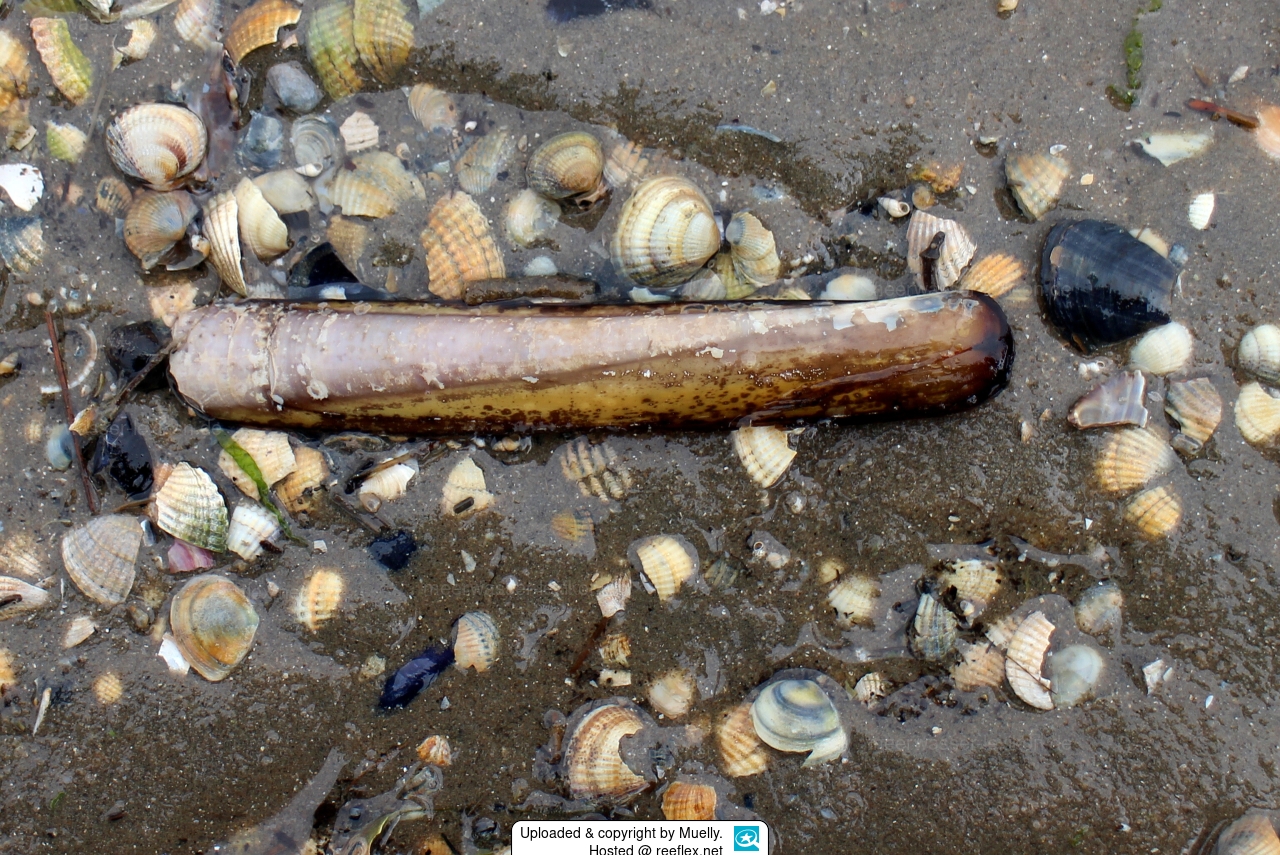Info
(Linnaeus, 1758)
Habitat:
Burrowing in sand, from the lower shore into the shallow sublittoral.
Colour:
White or cream, with pale purple, pink, or reddish streaks; periostracum glossy, light olive or yellow-brown, grey-green along posterior dorsal region. Inner surfaces white, often tinted blue or purplish.
Marine Species Identification Portal
Synonyms:
Solen ligulus Turton, 1822
Solen novaculus Montagu, 1803
Solen siliqua Linnaeus, 1758
Solen siliquosa Locard, 1886
Classification: Biota > Animalia (Kingdom) > Mollusca (Phylum) > Bivalvia (Class) > Heterodonta (Subclass) > Euheterodonta (Infraclass) > Euheterodonta (Order) > Solenoidea (Superfamily) > Pharidae (Family) > Ensis (Genus) > Ensis siliqua (Species)
Habitat:
Burrowing in sand, from the lower shore into the shallow sublittoral.
Colour:
White or cream, with pale purple, pink, or reddish streaks; periostracum glossy, light olive or yellow-brown, grey-green along posterior dorsal region. Inner surfaces white, often tinted blue or purplish.
Marine Species Identification Portal
Synonyms:
Solen ligulus Turton, 1822
Solen novaculus Montagu, 1803
Solen siliqua Linnaeus, 1758
Solen siliquosa Locard, 1886
Classification: Biota > Animalia (Kingdom) > Mollusca (Phylum) > Bivalvia (Class) > Heterodonta (Subclass) > Euheterodonta (Infraclass) > Euheterodonta (Order) > Solenoidea (Superfamily) > Pharidae (Family) > Ensis (Genus) > Ensis siliqua (Species)







 Muelly
Muelly





